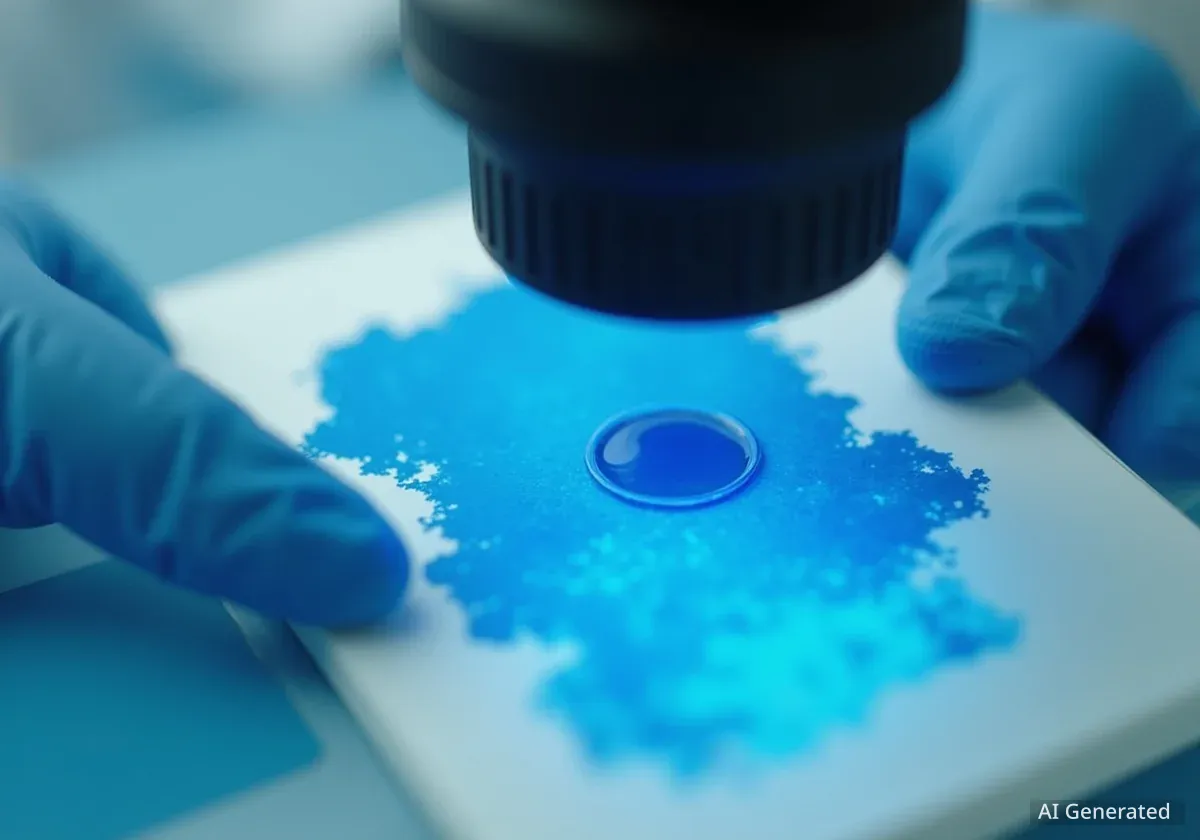Researchers have identified the vibrant blue pigment used in Jackson Pollock's iconic 1948 painting, "Number 1A, 1948," solving a mystery that has puzzled art historians for 77 years. A team from Stanford University confirmed the color is manganese blue, a synthetic pigment now banned due to its toxicity.
The discovery provides new insight into the materials used by the pioneering abstract expressionist. Pollock was known for his unconventional methods, and this finding adds another layer to the understanding of his innovative, and sometimes hazardous, artistic process.
Key Takeaways
- Scientists identified the mysterious blue pigment in Jackson Pollock's "Number 1A, 1948" as manganese blue.
- This pigment, known for its vibrant hue, was developed in 1907 but later banned because of health and environmental toxicity.
- The identification was made using advanced Raman spectroscopy at a lower energy level to overcome previous technical challenges.
- The finding confirms Pollock's use of a diverse and unconventional mix of both artist-grade and industrial materials.
The Enduring Puzzle of 'Number 1A, 1948'
Jackson Pollock's painting, "Number 1A, 1948," is a masterpiece of the abstract expressionist movement. The large canvas, measuring 2.7 meters, features a complex web of black and white paint, punctuated by vivid splashes of primary colors. The brilliant turquoise-blue streaks, however, have long been a subject of speculation.
Pollock created this work during a pivotal period in his career. He had moved away from traditional easel painting, instead placing his canvases on the floor to drip and pour paint from above. This radical technique, which he called his "action painting" method, allowed for a direct and physical engagement with his materials.
A Mix of Unconventional Materials
Pollock was famous for breaking artistic conventions, not just in technique but also in his choice of materials. For "Number 1A, 1948," he used a combination of traditional artist-quality oil paints alongside commercially available industrial enamel house paints. This chaotic mixture, combined with damage from a 1958 fire at the Museum of Modern Art where the painting was stored, made identifying specific pigments extremely challenging for decades.
While art historians had previously identified the red and yellow pigments in his palette, the origin of the striking blue remained unconfirmed until now. The research was led by chemist Alexander Heyer from Stanford University.
Overcoming Analytical Hurdles
Previous attempts to identify the blue pigment were inconclusive. Scientists had used a technique called Raman spectroscopy, which involves shining a laser on a material and analyzing how the light scatters. Each molecule scatters light uniquely, creating a fingerprint that can be used for identification.
However, early tests using a high-energy laser were obscured. The oil-based binding medium used to turn the pigment into paint produced a strong fluorescence that interfered with the results, making a clear identification impossible.
A New Approach Yields Results
The Stanford team succeeded by using a different approach. They carefully took microscopic scrapings from the painting's blue areas for lab analysis. By using Raman spectroscopy with a lower energy laser line of 785 nm, they were able to minimize the interfering fluorescence from the oil binder. This allowed them to get a clean signal that perfectly matched the known spectral signature of manganese blue.
"While past work has identified the red and yellow pigments that form part of his core palette, the vibrant blue in the painting has remained unassigned," the research team wrote in their published study.
The Science of a Forbidden Color
Manganese blue, chemically known as barium manganate sulfate (PB33), was a relatively new pigment when Pollock used it. It was first synthesized in 1907 and became commercially available to artists in the 1930s. Its intense, clean hue made it a popular choice for artists seeking a powerful visual effect.
The researchers found that the pigment's unique color comes from its molecular structure. It has two distinct bands of electronic transitions that absorb light on either side of the blue part of the spectrum. According to the study, this gap allows it to reflect an exceptionally pure blue color back to the viewer.
"Manganese blue accomplishes a difficult task: creating clean hues from colors in the center of the visible spectrum," the authors explained in their paper.
Despite its visual appeal, manganese blue is no longer available in art supply stores. It was banned due to concerns about its toxicity, posing health risks to artists and causing environmental harm. This research not only solves an art history mystery but also contributes to modern science.
Implications for Art and Science
Confirming the use of manganese blue adds an important detail to Jackson Pollock's material history. It reinforces his reputation as an experimental artist who embraced new and sometimes dangerous industrial materials to achieve his vision.
The detailed analysis of manganese blue's properties could also aid chemists in developing safer, non-toxic alternatives that replicate its vibrant color. In 2009, scientists discovered the first new blue pigment in 200 years, known as YInMn blue, which has been adopted by some artists as a substitute.
Edward Solomon, a chemist at Stanford, highlighted the broader significance of the work. "It's really interesting to understand where some striking color comes from on a molecular level," he told The Associated Press. The findings were officially published in the scientific journal PNAS.




